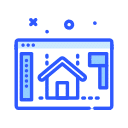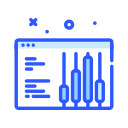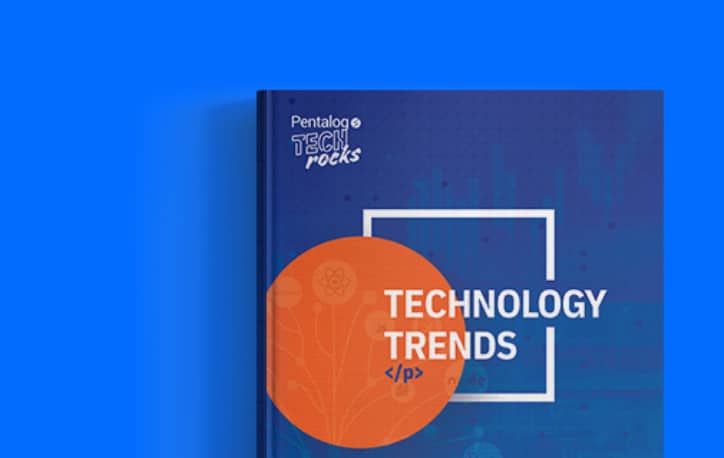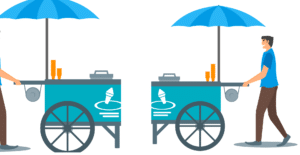What if we told you that you don’t have clean data – just clean CRM screens?
It’s easy to believe your data is healthy when everything looks fine inside Salesforce. But many tools that clean, route, and enrich data inside the CRM don’t address the deeper quality issues, such as duplicated records across systems, mismatched formats, inconsistent naming conventions, or missing identifiers that make downstream analytics unreliable. That’s the disconnect many teams run into when they push CRM-centric tools like RingLead into broader operational use.
RingLead, now part of ZoomInfo, is optimized for real-time lead management. Itexcels at deduplicating and routing lead data for sales and marketing workflows, particularly when that data originates from or is enriched by ZoomInfo itself. It’s highly effective in sales and marketing workflows, but is not optimized for multi-source data matching, complex custom rule creation, or fully transparent stewardship at scale, especially outside the CRM environment.
Data Ladder (DataMatch Enterprise, DME), by contrast, is source- and domain-agnostic data matching software built for operational accuracy, transparency, and scale. It delivers precision matching, robust profiling and cleansing tools, and full control over match logic. Whether you’re cleaning Excel sheets, matching across files or databases, or creating golden records from siloed legacy systems, Data Ladder gives you the tools and control to do it right without locking you into any ecosystem.
In this comparison, we’ll break down the key differences between RingLead and Data Ladder, so you choose the solution that fits your data landscape. If you’re searching for a RingLead alternative or simply looking for a data quality solution that goes beyond CRM deduplication and solves issues at their source, this guide is for you.
Diagnostic Flowchart: What Are You Actually Trying to Solve?

Feature Breakdown: What Each Tool Offers
| Feature | RingLead (ZoomInfo) | Data Ladder |
| Primary Use Case | Lead deduplication, enrichment, routing, within CRM/MAP | High-accuracy data matching, deduplication, profiling, and cleansing across domains and sources. |
| Matching Techniques | Match keys and rule-based deduplication, with heavy reliance on contact/account IDs from ZoomInfo | Fuzzy, phonetic, numeric, exact, and domain-specific matching algorithms, all configurable |
| Integration Depth | Deep native integration with Salesforce and MAPs; optimized for ZoomInfo enrichment and workflows | Platform-agnostic: connects to files, databases, APIs, and enterprise systems |
| User Experience | Designed for sales/marketing ops; GUI geared toward lead ops teams | GUI for technical and non-technical users; visual match configuration, rule tuning, real-time preview |
| Data Enrichment | Real-time enrichment from ZoomInfo (paid add-on); strong for firmographic/contact detail | No enrichment services – focused on cleansing, standardization, and deduplication |
| Speed to Deploy | Fast for CRM environments (especially with ZoomInfo); limited outside that stack | Deployed in hours; no dependency on a CRM or enrichment stack |
| Auditability & Transparency | Limited – match logic is configurable but abstracted; less visibility into scoring and match rationale | Full transparency into match rules, scores, thresholds, and logs. Users can preview, adjust, and explain every rule |
| Best Fit For | Sales/marketing teams needing real-time lead routing and enrichment tied to ZoomInfo | Data teams needing precise, scalable, and auditable matching across any source or domain |
Data Ladder vs. RingLead: Key Differences
1. Matching Accuracy and Transparency
RingLead: Offers deduplication via matching rules defined within its platform, primarily for Salesforce objects like leads, contacts, and accounts. RingLead data matching feature allows users to choose from preset or custom match rules, but the logic is largely geared toward field-level comparison inside a CRM context. There is limited visibility into the underlying matching algorithm and little room for advanced configuration beyond CRM workflows.
Data Ladder: Data Ladder’s data quality software – DataMatch Enterprise (DME) – brings full transparency and control to the matching process. Users can define, weight, and test complex matching rules across multiple attributes, using phonetic, fuzzy, numeric, and domain-specific algorithms. DME’s Pattern Builder allows teams to prototype and preview match results in real time, before committing to changes. Teams can also fine-tune logic and audit match decisions, which makes it easier to trust and explain results.
2. Scope: CRM Deduplication vs. Enterprise Data Matching
RingLead: Strong within Salesforce, but limited beyond it. Its core modules – Cleanse, Dedupe, Enrich, Route – are tightly tied to CRM workflows and marketing operations. While RingLead ZoomInfo supports API connections and integrations, its native capabilities are optimized for contact and lead data within CRM systems.
Data Ladder: Purpose-built for enterprise-wide matching, Data Ladder supports structured and semi-structured data from virtually any source – CSV, Excel, SQL Server, Oracle, Snowflake, Salesforce, SAP, and more. Whether you’re deduplicating customer records in CRM or linking supplier data across ERPs, DME applies high-precision matching algorithms every single time, and even at scale. If you’re searching for a broader RingLead deduplication alternative that works across ERPs, data warehouses, and third-party sources, Data Ladder is designed for that scope.
3. Batch and Real-Time Matching
RingLead: Real-time deduplication and lead routing are RingLead’s strengths. It also supports batch deduplication within CRM datasets, but is not optimized for large-scale, multi-source, offline matching jobs that span non-CRM databases.
Data Ladder: Supports both batch and real-time matching workflows, with full support for automation via REST APIs. Large datasets can be processed in minutes using DME’s in-memory processing engine (it has been tested on 100M+ records). This makes it suitable for recurring data quality jobs, data warehouse unification, and operational MDM pipelines. If you’re looking for a RingLead replacement for offline consolidation tasks, DME can be the right fit for you.
4. Deployment and Integration
RingLead: Cloud-native, with integrations centered around Salesforce and marketing platforms. It’s ideal for RevOps teams needing quick wins in CRM hygiene. However, deployment flexibility is limited, which means you’re bound to RingLead’s Salesforce-centric, cloud model.
Data Ladder: Offers flexible deployment options. It can be deployed on-premises, on cloud, or in hybrid ecosystems, and also integrates with a wide range of platforms including Salesforce, Snowflake, Azure, AWS, Oracle, and others. No need to move your data into a specific ecosystem or worry about compliance bottlenecks. Data Ladder meets you where your data lives. This flexibility supports compliance, performance, and architectural freedom.
5. Usability: Built for RevOps vs. Data Teams
RingLead: Designed for RevOps teams with an intuitive UI for CRM users. It works well for non-technical users managing leads and contacts (working within CRM environments). But this simplicity comes at the cost of depth and becomes a limitation for technical users who need granular control or deeper configuration.
Data Ladder: Designed for data analysts, engineers, and business users alike. DME features a drag-and-drop interface that allows non-technical users to build match rules without writing code, while also offering advanced options for scripting, configuration, and API integration for data professionals. The platform strikes a balance between usability and control.
6. Price-to-Capability Ratio
RingLead: Pricing is subscription-based and aligned with Salesforce data volumes and module usage. For Salesforce-centric teams or CRM-centric workflows, it can be fair investment. But organizations needing cross-system data quality may require stitching together multiple tools or workflows—adding complexity and cost.
Data Ladder: Offers flat, license-based pricing regardless of number of records and data sources. Teams get access to profiling, cleansing, matching, deduplication, and golden record creation—all in one platform. There’s no need to layer multiple tools or outsource complex logic.
Common Use Cases for Data Ladder vs. RingLead
| Use Case | RingLead (ZoomInfo) | Data Ladder |
| Prevent duplicate leads from entering Salesforce | Native dedupe rules, real-time prevention | Clean and match before upload with full control |
| Clean existing Salesforce records before a campaign | Built for this | Just as fast, with more control |
| Clean & merge leads from a ZoomInfo campaign before Salesforce import | Native use case: dedupe + enrich + route based on campaign logic | Can do it, but lacks ZoomInfo-native hooks or sales routing |
| Clean customer, vendor, or citizen records outside your CRM | Limited scope – focused on lead/contact data | Build for data cleansing across domains |
| Deduplicate a vendor list from Excel before AP onboarding | Not built for this use case; would require awkward CRM routing | Fast import, match, dedupe, export – no CRM or prep needed |
| Match and merge records across Excel, databases, and APIs | Not built for multi-source matching | Core strength: fuzzy, phonetic, exact numeric and custom logic |
| Deduplicate patient records across systems by name, DOB, and SSN | Not optimized for complex fuzzy matching across multiple identifiers | Built for multi-field, multi-domain matching with full control |
| Merge siloed customer data across apps | Possible if routed through CRM, but not seamless | Ideal use case; handles complex joins, survivorship rules, and export |
| Need match explainability for compliance or auditing | Match logic is opaque; rules often embedded in workflows | All logic is visual, scored, and reviewable in plain English |
| Create golden records (for vendors, customers, etc.) | Not a fit | Core functionality: match, merge, validate, export |
RingLead (ZoomInfo) is:
- Purpose-built for Salesforce and CRM-centric workflows
- Tightly couple with ZoomInfo data for B2B sales/marketing
- Focused on lead enrichment, routing, scoring, and deduplication
- Designed for revenue operation teams, not technical data quality work
Data Ladder (DataMatch Enterprise) is:
- Designed to work across file types (CSV, Excel), databases (SQL, Oracle, etc.), and APIs
- Core strengths in data profiling, cleansing, matching, standardization, and merging (creating golden records)
- Industry-agnostic: used across sectors: healthcare, government, insurance, finance, education, etc.
- Built for both technical and non-technical users who need precision and visibility
Which Tool Fits Your Data Footprint Best?
RingLead is a powerful add-on for CRM-driven teams that need smarter lead management, deduplication, and enrichment inside Salesforce. If you’re deeply embedded in the ZoomInfo-Salesforce ecosystem and your primary data problem is sales efficiency, it’s a good fit.
But if your challenges involve messy, multi-source data – vendor records, healthcare data, legacy customer systems, or government registries – in varying formats, RingLead isn’t optimized for the level of control, flexibility, and precision that enterprise data quality demands.
That’s where Data Ladder wins as the best alternative to ZoomInfo RingLead. It offers:
- Greater matching accuracy
- More transparency and auditability
- Broader domain support
- Lower total cost (no enrichment lock-in)
If your job is to keep Salesforce clean, RingLead might be enough.
But if your responsibility is to make sure the data feeding Salesforce, and your entire business, is correct, explainable, and usable, Data Ladder is the better choice.
It’s not only one of the best RingLead alternatives for data matching, it also offers excellent profiling, cleansing, and standardization features to get your base data in order. With DME, all the data feeding your systems remains accurate and reliable.
Ready to see it live?
Run a real match test with your own data — no integrations required.
[Get a free trial] or [book a personalized demo] to see how you can match, dedupe, and standardize your data with confidence – across any system, source, or scale.





































